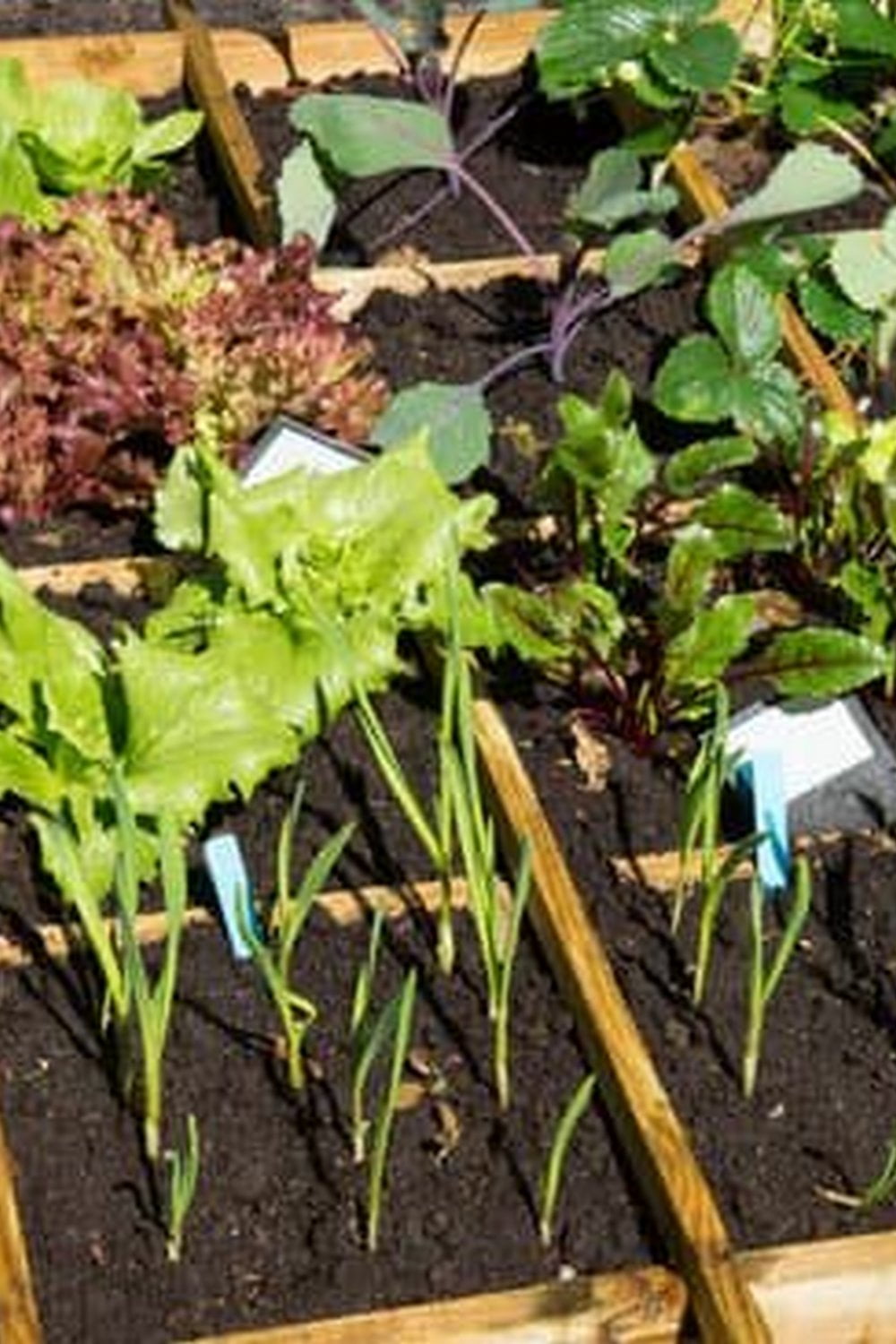Urban gardening has experienced a growing trend in recent years, with more and more people turning to inner city vegetable gardens as a means of promoting sustainability and food security. The importance of these urban gardens cannot be overstated, as they offer a range of benefits to both the communities in which they are located and the environment as a whole.
From improving access to fresh produce in low-income neighborhoods to reducing carbon emissions associated with food transportation, inner city vegetable gardens play a vital role in promoting healthier and more sustainable living.
One of the key benefits of inner city vegetable gardens is the positive impact on community health. By providing access to fresh, locally grown vegetables, these urban gardens contribute to improved nutrition and overall well-being for residents.
Additionally, they offer economic benefits for low-income communities by reducing grocery expenses and creating opportunities for small-scale entrepreneurship through selling surplus produce. Furthermore, inner city vegetable gardens help mitigate environmental challenges by reducing food miles and the carbon footprint associated with transportation and distribution.
However, despite their numerous advantages, inner city vegetable gardens also face several challenges. Limited space and access to land pose significant obstacles for establishing urban gardens in densely populated areas. Soil quality and contamination concerns also present significant hurdles in urban settings, while lack of resources and funding further complicate efforts to implement community gardening initiatives. As such, addressing these challenges becomes crucial in order to ensure the success and sustainability of inner city vegetable gardens.
Benefits of Inner City Vegetable Gardens
Health Benefits of Fresh, Locally Grown Vegetables
One of the primary benefits of inner city vegetable gardens is the opportunity to grow and consume fresh, locally grown vegetables. In urban areas where access to affordable, nutritious produce may be limited, community gardens provide an alternative source of fresh fruits and vegetables.
By incorporating these nutrient-dense foods into their diets, individuals in inner cities can improve their overall health and reduce the risk of chronic diseases such as obesity, diabetes, and heart disease. Additionally, gardening itself has been shown to have mental health benefits, reducing stress and anxiety levels.
Economic Benefits for Low-Income Communities
Inner city vegetable gardens also offer economic benefits for low-income communities. Through community gardens and urban farming initiatives, residents can reduce their grocery bills by growing their own produce or purchasing it at a lower cost from local markets. This can help alleviate financial strain and improve food security for families living in underserved neighborhoods. Moreover, selling surplus harvests at farmers’ markets or to local businesses provides opportunities for supplemental income within the community.
Environmental Benefits of Reducing Food Miles
Another significant advantage of inner city vegetable gardens is the environmental impact of reducing food miles and carbon footprint. By cultivating produce locally within urban areas, the need for long-distance transportation is minimized, thereby decreasing greenhouse gas emissions associated with food delivery. Additionally, urban gardening promotes sustainable land use practices and contributes to biodiversity conservation in densely populated areas. Overall, inner city vegetable gardens play a crucial role in promoting environmental sustainability within urban settings.
Challenges of Inner City Vegetable Gardens
Inner city vegetable gardens face several challenges that can impact their success and sustainability. One of the main obstacles is limited space and access to land in urban areas. With high population density and competition for available land, finding suitable spaces for community gardens can be difficult. This challenge often requires creative solutions such as rooftop gardens, vertical farming, or converting vacant lots into productive green spaces.
Another significant concern is the quality of soil and potential contamination in urban areas. Industrial activities, pollution, and previous land use can result in soil that may not be safe for growing food. Addressing soil quality and ensuring that proper testing and remediation are conducted before planting is essential for the success of inner city vegetable gardens.
Furthermore, lack of resources and funding can hinder the establishment and maintenance of community gardens. Low-income neighborhoods, where the need for access to fresh produce is often greatest, may struggle to secure the financial support needed to sustain these initiatives. This emphasizes the importance of public and private partnerships as well as government support to provide necessary resources for inner city vegetable gardens.
These challenges highlight the need for innovative approaches and collaborations to overcome obstacles faced by inner city vegetable gardens. Community engagement, advocacy for urban gardening policies, and mobilizing local support are crucial steps in addressing these challenges and promoting sustainable food production in urban environments.
| Challenges | Issues |
|---|---|
| Limited space and access to land | Demand for creative solutions such as rooftop gardening or vertical farming. |
| Soil quality concerns | Potential contamination from previous land use necessitates proper testing. |
| Lack of resources and funding | Necessity of public-private partnerships or government support. |
Successful Examples of Inner City Vegetable Gardens
Inner city vegetable gardens have been sprouting up in urban areas across the country, providing local communities with access to fresh, sustainably-grown produce. These initiatives are not only beneficial for promoting food security and sustainability but also for fostering community engagement and empowerment. Some successful examples of inner city vegetable gardens include:
- The Growing Home in Chicago: This organization operates several organic farms in the Englewood neighborhood, providing job training and employment opportunities for individuals with barriers to traditional employment. The urban farms not only produce fresh vegetables but also support the local community through education and workforce development programs.
- Camden Children’s Garden in New Jersey: This urban green space features various themed gardens, including a vegetable garden that allows children to learn about planting, harvesting, and cooking fresh produce. The garden serves as an educational resource for local schools and families while promoting healthy eating habits.
- Detroit Black Community Food Security Network: This network operates D-Town Farm, a two-acre vegetable farm in Detroit that focuses on addressing food justice issues in predominantly African American neighborhoods. The farm not only provides access to fresh produce but also advocates for food sovereignty and sustainable agriculture practices.
These examples highlight the diverse impact of inner city vegetable gardens on their respective communities, from addressing unemployment and education to empowering residents with greater food access.
Furthermore, these successful projects serve as models for other urban areas looking to establish similar initiatives. By sharing best practices and lessons learned, it becomes possible to build a network of inner city vegetable gardens that collectively contribute to a more sustainable and equitable food system.
How to Start an Inner City Vegetable Garden
Starting an inner city vegetable garden can be a rewarding and impactful way to contribute to sustainability and food security in urban areas. With limited space and resources, it may seem daunting, but with the right approach, it is possible to create a successful inner city vegetable garden.
Securing Land and Resources
One of the first steps in starting an inner city vegetable garden is securing land for the garden. This can be done by reaching out to local governments or community organizations to identify available plots of land for gardening. Additionally, it is important to gather resources such as seeds, soil, and gardening tools. Many cities have programs or grants available to support community gardens, so it’s crucial to do some research and take advantage of these opportunities.
Growing Vegetables in Limited Space
In inner cities, space is often at a premium, making it necessary to get creative with how vegetables are grown. Vertical gardening, container gardening, and rooftop gardens are all effective ways to maximize limited space. Additionally, utilizing raised beds or hydroponic systems can also help make the most of small areas while still producing a bountiful harvest.
Community Engagement and Involvement
Building community involvement is key to the success of an inner city vegetable garden. Engaging local residents through workshops, volunteer opportunities, and educational events can foster a sense of ownership and pride in the garden. By involving the community in the planning and maintenance of the garden, it becomes a shared resource that everyone can benefit from.
By following these steps and getting creative with solutions for limited space and resources, starting an inner city vegetable garden can have a positive impact on both the environment and the local community. Furthermore, supporting urban gardening initiatives like this contributes to promoting food justice and empowering communities through sustainable practices.
The Role of Inner City Vegetable Gardens in Food Justice
Inner city vegetable gardens play a crucial role in addressing food justice issues in urban areas. One of the major challenges faced by inner city communities is the lack of access to fresh, healthy produce, leading to food deserts and nutritional disparities. By establishing community gardens and urban farms, residents can take control of their food supply and improve access to nutritious fruits and vegetables.
In low-income neighborhoods, the presence of inner city vegetable gardens has a direct impact on food sovereignty, which refers to the right of people to have access to healthy and culturally appropriate food produced through ecologically sound and sustainable methods. Through gardening initiatives, communities can reclaim their food system, reduce dependence on industrialized agriculture, and promote self-sufficiency.
Moreover, inner city vegetable gardens empower residents by providing opportunities for education, skill-building, and economic empowerment. Community members learn about sustainable farming practices, nutrition, and environmental stewardship. As they actively engage in tending to their gardens and harvesting crops, they not only improve their own well-being but also foster a sense of ownership over their local food resources.
| Impact | Benefit |
|---|---|
| Access to fresh produce | Improved nutrition and health outcomes |
| Food sovereignty | Promotes self-sufficiency and reduces reliance on external food sources |
| Empowerment | Opportunities for education, skill-building, and economic empowerment |
Partnership and Collaboration in Inner City Vegetable Gardens
Inner city vegetable gardens play a crucial role in addressing food insecurity and promoting sustainable living in urban environments. In order to thrive, these community gardens often rely on partnerships and collaborations with local agencies, businesses, and community organizations.
Partnerships with local government agencies can provide inner city vegetable gardens with access to public land for cultivation. This is especially important in densely populated urban areas where available space for gardening may be limited. Additionally, collaborating with city officials can help secure funding and resources to support the development and maintenance of these gardens.
Businesses can also play a significant role in supporting inner city vegetable gardens through donations of tools, seeds, and other supplies. Establishing partnerships with grocery stores and restaurants can create opportunities for selling surplus produce or obtaining compost materials, contributing to the sustainability of the garden operations.
Community organizations are essential partners in fostering a sense of ownership and participation in inner city vegetable gardens. Collaborating with local nonprofits or neighborhood associations can help facilitate community outreach, education programs, and volunteer opportunities within the garden. These organizations can also advocate for policies that support urban agriculture and address barriers faced by inner city vegetable gardens.
Overall, partnerships and collaboration are vital to the success of inner city vegetable gardens. By working together with various stakeholders, these community-based initiatives have the potential to significantly improve access to fresh produce, promote environmental sustainability, and strengthen community resilience in urban areas.
- Local government agencies can provide access to public land
- Businesses can donate tools, seeds, and other supplies
- Community organizations facilitate outreach, education programs, and support policy advocacy
The Future of Inner City Vegetable Gardens
Over the past decade, there has been a growing trend of urban gardening, particularly in inner cities. The rise of inner city vegetable gardens has played a crucial role in promoting sustainability and food security within these communities. As more individuals and organizations recognize the importance of locally grown produce, the future of inner city vegetable gardens looks promising.
One of the key benefits of inner city vegetable gardens is the promotion of health through the cultivation and consumption of fresh vegetables. By having access to locally grown produce, residents can improve their diets and overall well-being. Additionally, the economic benefits for low-income communities are significant, as they can save money on grocery bills while also potentially generating income from selling surplus crops.
Despite these advantages, there are several challenges that come with establishing inner city vegetable gardens. Limited space and access to land pose significant obstacles for many communities. Furthermore, concerns about soil quality and contamination in urban areas must be carefully addressed in order to ensure the safety of the produce grown in these gardens. Lack of resources and funding also presents a barrier to the development and maintenance of community gardens.
Looking towards the future, it is essential to explore strategies for expanding inner city vegetable gardens while addressing existing challenges. By partnering with local agencies, businesses, and community organizations, it is possible to increase support for urban gardening initiatives and create sustainable solutions for food justice within inner cities. With concerted efforts and collaboration, the potential impact of inner city vegetable gardens on community health and environmental sustainability is considerable.
Conclusion
In conclusion, inner city vegetable gardens play a crucial role in promoting sustainable living and community health. The growing trend of urban gardening has brought about numerous benefits, including access to fresh, locally grown vegetables, economic opportunities for low-income communities, and the reduction of food miles and carbon footprint.
Despite the challenges of limited space, soil quality concerns, and funding limitations, successful examples of community gardens and urban farms have shown the positive impact of inner city vegetable gardens on the local community and the environment.
It is important to recognize the role of inner city vegetable gardens in addressing food justice issues such as food deserts and lack of access to fresh produce in urban areas. By promoting food sovereignty and empowering communities through gardening, these initiatives are essential for creating a more equitable food system. Additionally, partnership and collaboration with local agencies, businesses, and community organizations are key in supporting the growth and sustainability of inner city vegetable gardens.
As we look towards the future, there is great potential for expanding and scaling up urban gardening initiatives. It is crucial for individuals, organizations, and policymakers to support and promote inner city vegetable gardens as a means of addressing food insecurity, promoting environmental sustainability, and fostering community resilience. With concerted efforts and collective action, we can create healthier and more vibrant inner cities through the establishment of thriving vegetable gardens.

If you’re looking to get into vegetable gardening, or are just looking for some tips on how to make your current garden better, then you’ve come to the right place! My name is Ethel and I have been gardening for years. In this blog, I’m going to share with you some of my best tips on how to create a successful vegetable garden.





